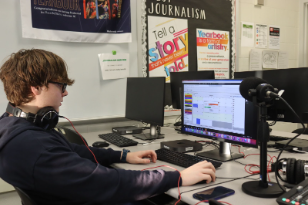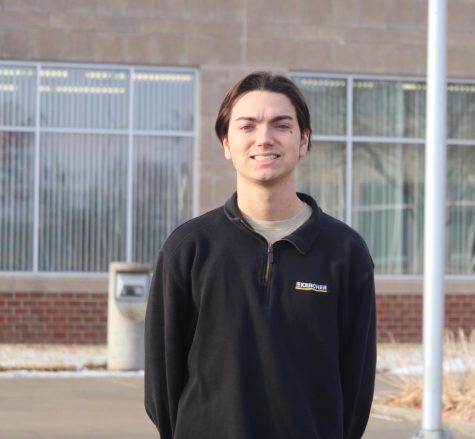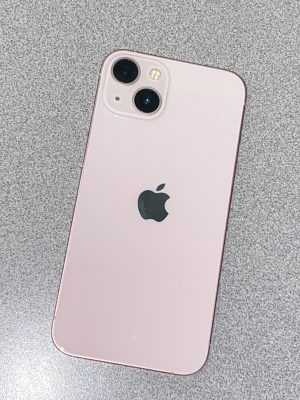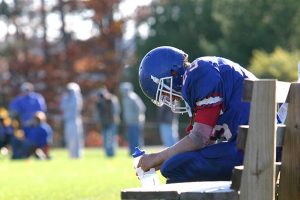Tuning in to something new
Students get a taste of how a real radio station works

Logan Moseley Loading some songs onto the radio software.
February 9, 2023
“You’re listening to The High School Radio project, live from Millard West High School.”
The Nebraska Broadcasters Association has provided the equipment needed to host a live radio broadcast, which allows students to get a look into the world on how a real radio station operates ,along with giving students a hands-on experience with the equipment, and puts them in a real radio station environment. Some of the things that include simulating a real radio station environment, is when the students log into MusicMaster with their account, select the types of music and genres to schedule to the queue, and put the voice overs in between songs.
Part of setting up the equipment is making sure that the microphones are in the ports and turned on, and making sure that the mixer is picking up the sounds from the microphone and transmitting it crisply to the computers software and through the headphones.
“We have a few different programs we use, the one we use primarily is called Music Master, and that allows us to schedule the music we want to play,” junior Logan Moseley said. “We then can go into the software and add whatever we need to the list, like PSAs, and news about events and activities that are going on in the school.”
Part of scheduling the music includes going into the archive of available music, selecting what songs are going to be put into the queue, and deciding what time and day the song will be played.
Alongside Moseley, students in the journalism department help with the radio broadcast. The segments that are heard in between songs were actually recorded and scripted by the journalism students. Multiple software programs are used to edit and export these segments, like Audacity and MusicMaster. The voice overs are then reviewed and edited to insure they are in their best form, before being exported to the real broadcast.
“I was very excited to jump in and get working on the radio when all the equipment was first brought to our class,” senior Kelsey Nunnenkamp said. “At first it was hard to get used to hearing my own voice, but now it’s fun to hear my PSA in the background during class work time. Not only that, but I think it’s really cool how our school was selected to do the radio project out of all the other schools in Nebraska.”
With modern technology making new equipment more compact than ever, the equipment can be quickly assembled and disassembled, and able to travel to schools in a box the size of a briefcase. Inside this briefcase-sized box lies all the equipment you would find inside of a real radio studio, just condensed down. Millard West High School is one of two schools in the country to use this equipment.
“We’re giving students a chance to try something new; to explore their interests and help shape their future decisions about post-secondary education and career interests,” NBA president Jim Timm said. The HSRP allows students to gain skills and confidence in public speaking, audio production, working under deadlines, working in a team environment and providing concise, accurate information. HSRP experience can provide a boost on college applications and internship opportunities, too. Ultimately, the HSRP is designed to give students an early look at what it’s like to work in Radio.”
With this support and equipment, the opportunities are nearly limitless. The experience gained from these students will always benefit their skills in the future. You can tune into the Highschool radio project at High school Radio Project.org.






